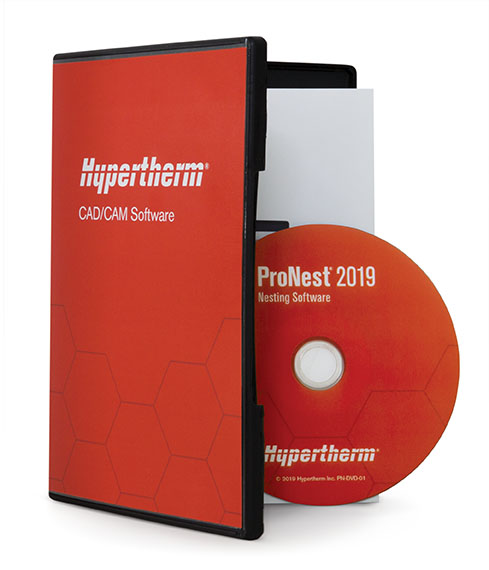ProNest® 2019 now contains improved cutting outcomes in many mild steel and non-ferrous cutting applications. These cutting improvements will be effective in the upreved version 13.0.2 of ProNest 2019 and will automatically impact all installed XPR300s that use ProNest 2019. Below is a list of the improvements and their impact on cutting:
Mild Steel Improvements
1. Programmed in automatic speed reductions at the end of exterior profiles on thicker (in relationship to process ratings) mild steel shapes to ensure part drops from skeleton for above water processes.
2. Reduced asynchronous stop on lead out/ramp down on mild steel interior profiles to ensure that the cut part drops but the system does not experience an arc stretch detection error (which might reduce consumable life).
3. For interior cuts with the 30 and 50 amp oxygen processes we increased the feedrate settings to 100% for interior cutting which reduces the overburn phenomenon. Dross levels are also reduced.
Non-ferrous Improvements
1. To minimize the problem associated with large pierce puddles generated in stainless steel and aluminum cutting, we moved the pierce point further away from the cutting profile (if allowed by the part geometry).
2. To reduce corner dross and color darkness on stainless steel, we removed the speed corner ramp down and ramp up on all OptiMix H2-Ar-N2/N2 processes and the VWI N2/H2O processes for 25 mm (1”) and up. This change is applied to above water processes.
3. For stainless steel and aluminum interior feature cutting, we changed the default lead in from an arc (as used with the mild steel True Hole process) to a straight/linear lead in, which facilitates more dependable part dropping.
4. For stainless and aluminum external cutting, the default option of side lead in is changed from an arc to linear. This facilitates more dependable part dropping.
5. For interior slots that include a right (90°) angle, we adjusted the lead in from 30° from the corner to 45° from the corner. This, again, will help ensure that the part will drop from the skeleton. This change applies to stainless and aluminum.
